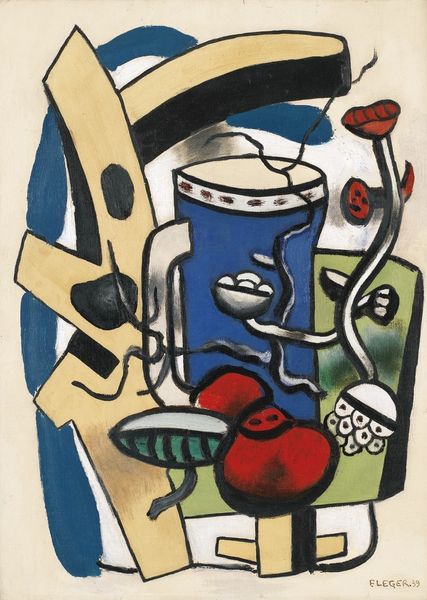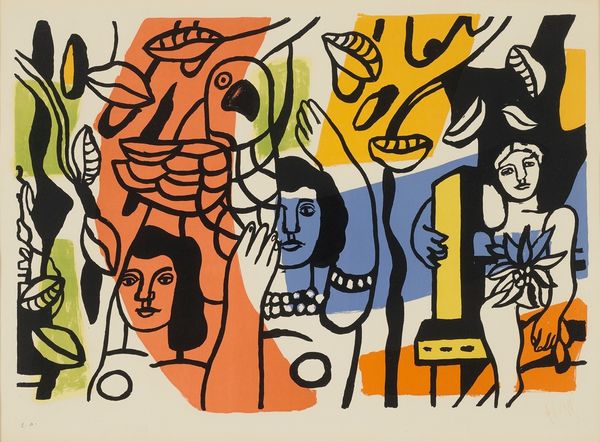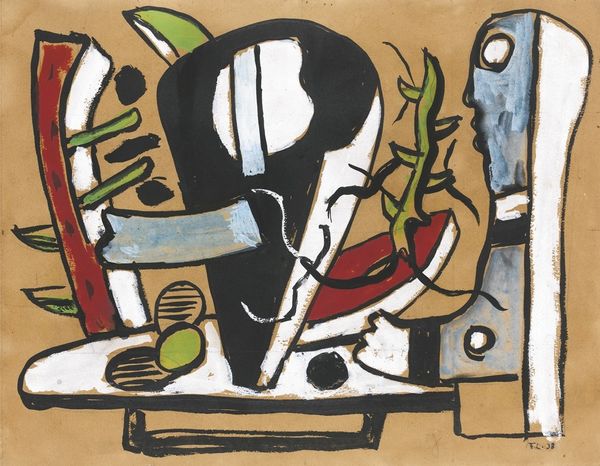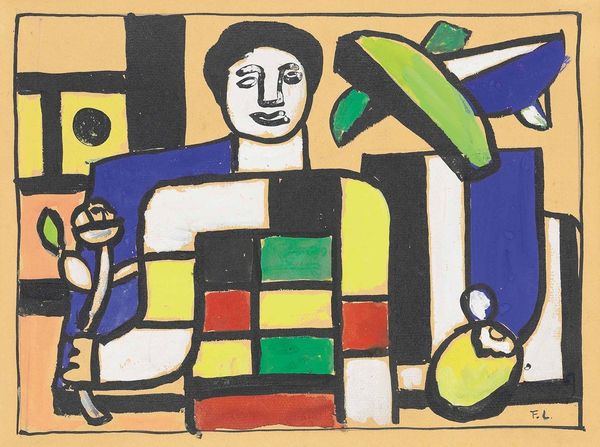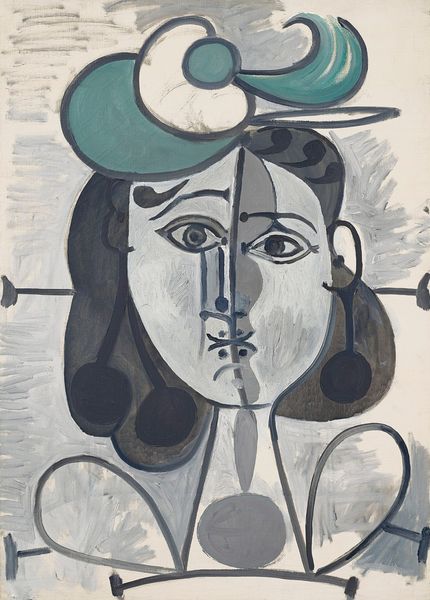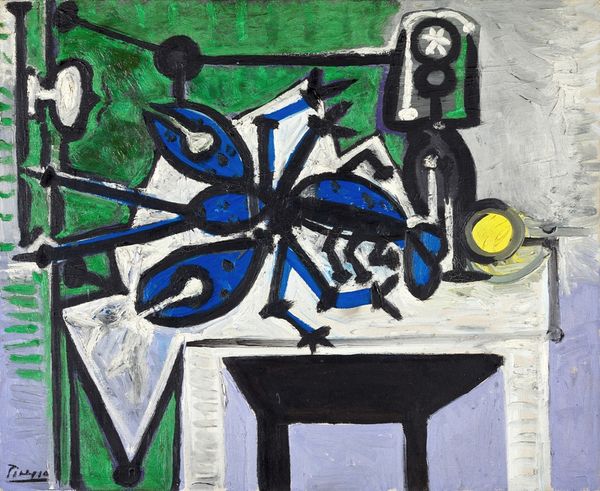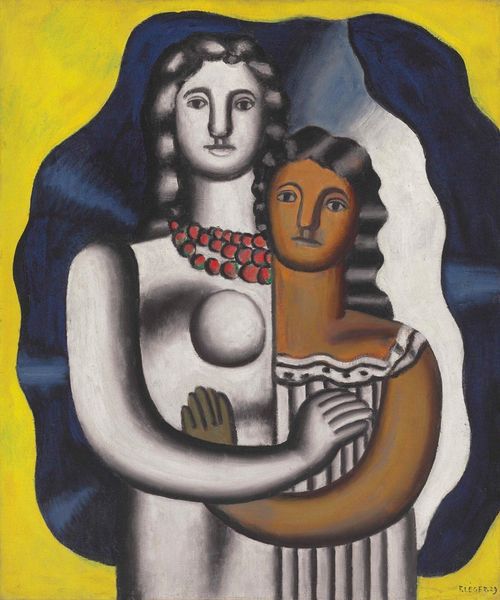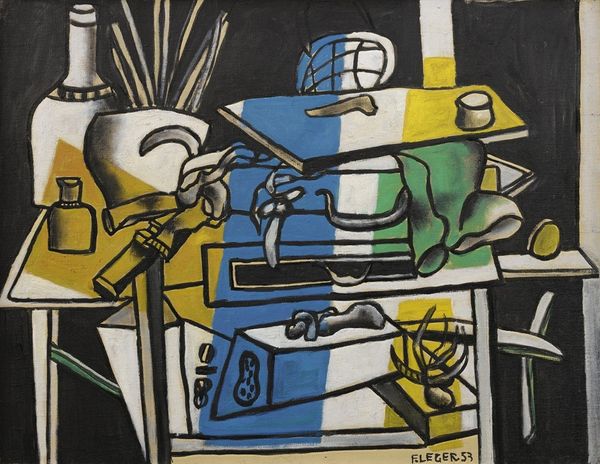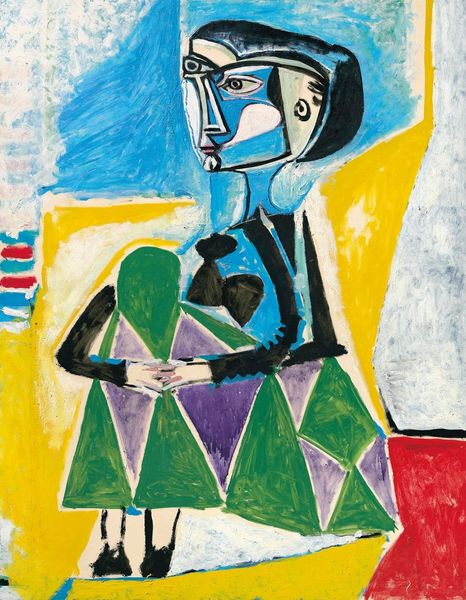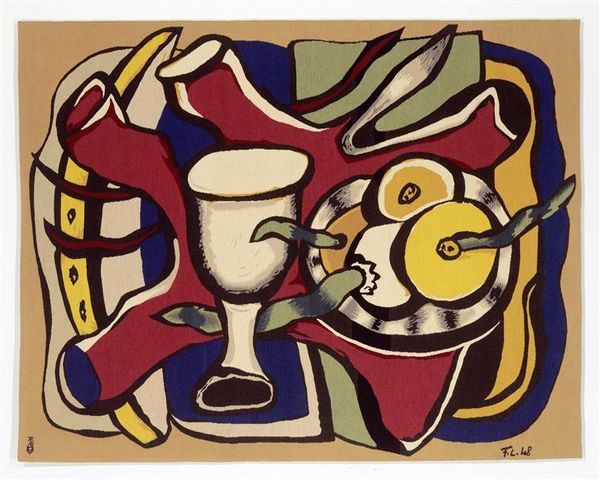
Copyright: Modern Artists: Artvee
Curator: Fernand Léger’s "La statuette et le vase rouge," dating from 1951, employs oil paint to render this compelling composition. It feels like a snapshot from an artist’s studio. What strikes you immediately about it? Editor: Its playfulness! It feels almost childlike in its bright, bold simplicity, yet there's something incredibly sophisticated happening with the composition. Like a visual poem about contrasts. Curator: Yes, the juxtaposition of a classical sculptural head with an everyday vase really does create a visual tension. Do you notice how the classical form seems almost softened? Stripped from any sort of ancient dignity. Editor: Exactly! It is the visual definition of kitsch! And the plant – is it real, or is it another stylised object like the vase? It feels so artificial, almost like it's part of a theatre set. Are the colours significant? Curator: Well, Léger often worked with primary colors, seeing them as the building blocks of a new visual language accessible to everyone. Red for vitality, blue for clarity. The yellow perhaps suggests joy? Editor: Ah, interesting! The red vase almost jumps out, and its little decorative design—what’s the history of circles and what they might signify, perhaps life, eternity, a cyclical quality to existence. It’s intriguing that this “simple” still life makes me ponder time! Curator: The circle of life perhaps captured amidst simple objects, mirroring the daily creativity surrounding us, no? It reminds us that even ordinary things can hold symbolic weight, provided they have a strong composition. Léger had an interesting talent for combining art history with modern subjects and methods. Editor: I am struck with this feeling of visual democracy. He elevates everyday items to this iconic status, questioning how we assign worth to images. It gives one pause. Curator: Léger found beauty in the industrial, celebrating it instead of bemoaning it. He shows the possibilities within common surroundings. And so, to draw us back, "La statuette et le vase rouge," shows us these potential dialogues in form, object, colour, and light. It invites us to question art.
Comments
No comments
Be the first to comment and join the conversation on the ultimate creative platform.
